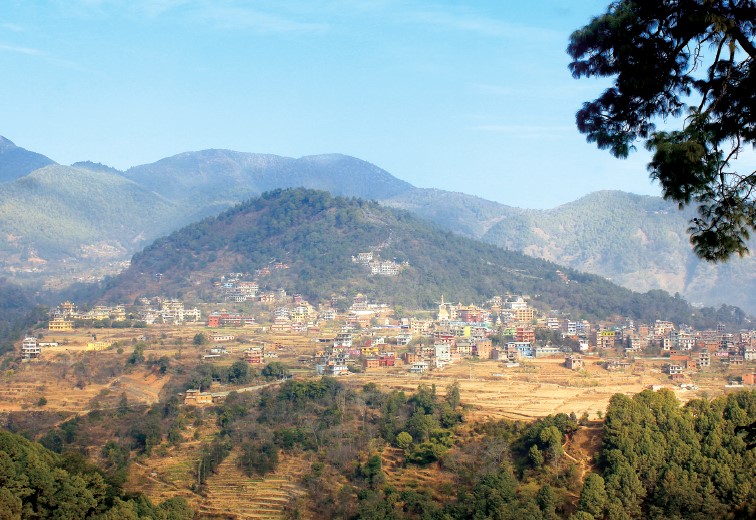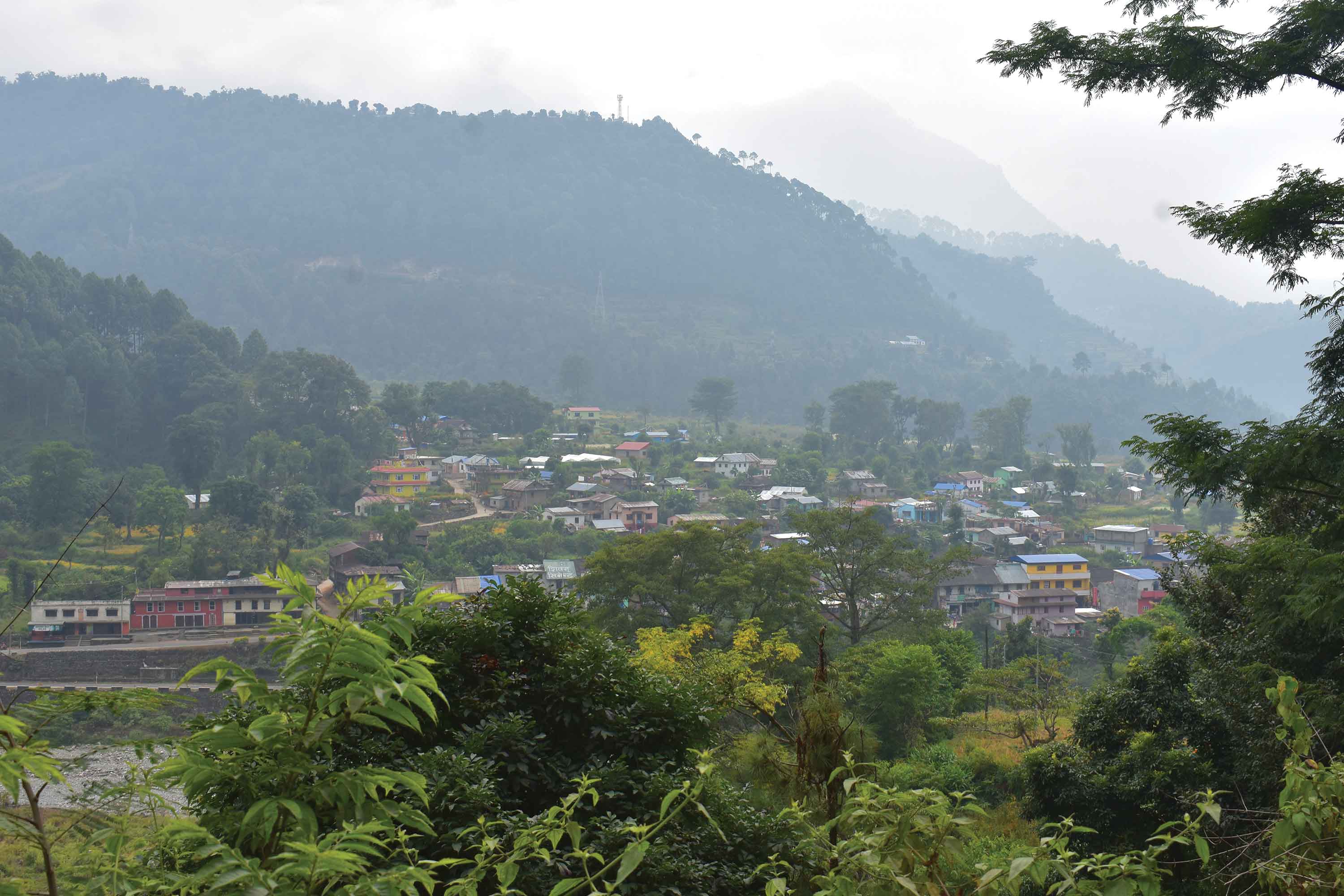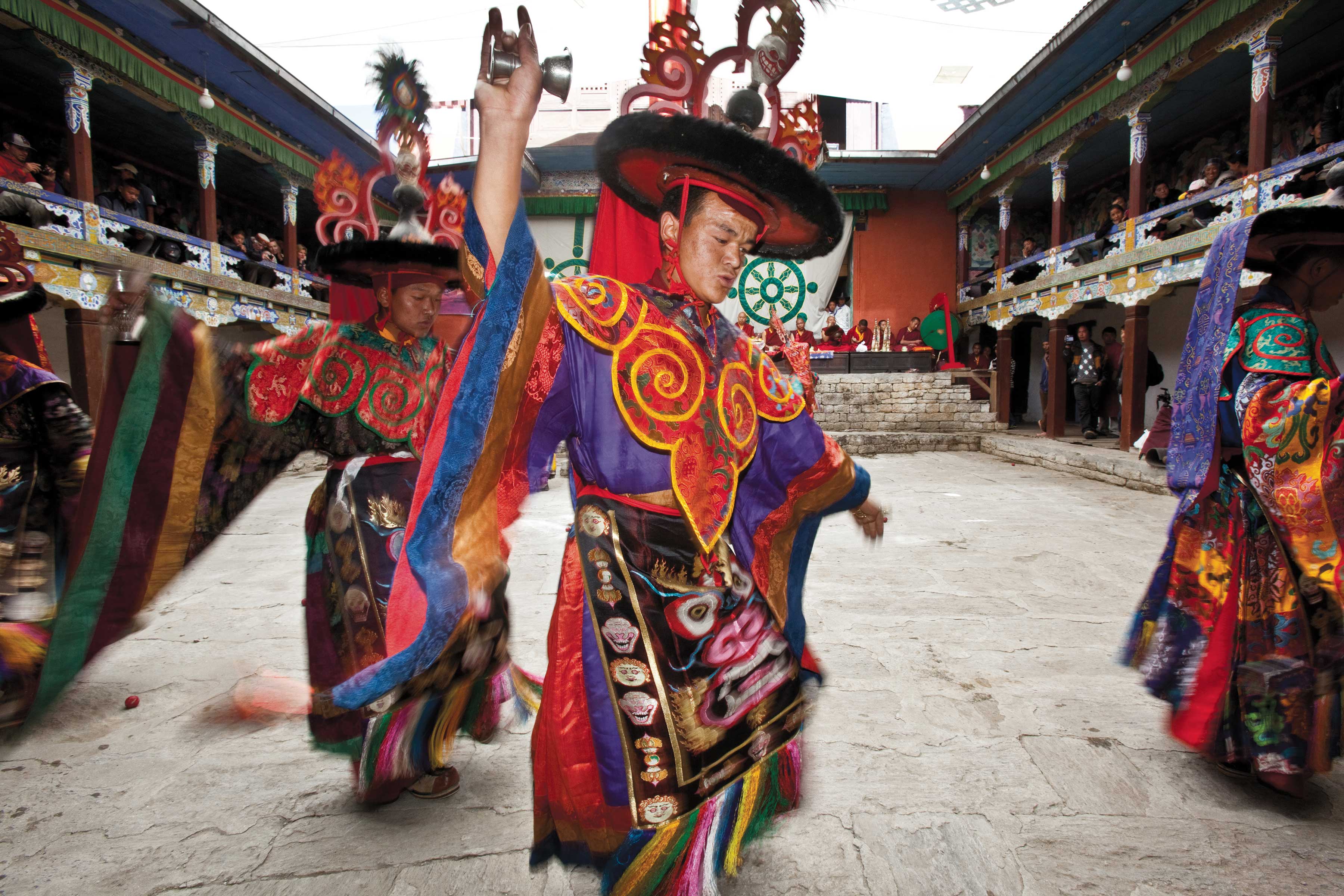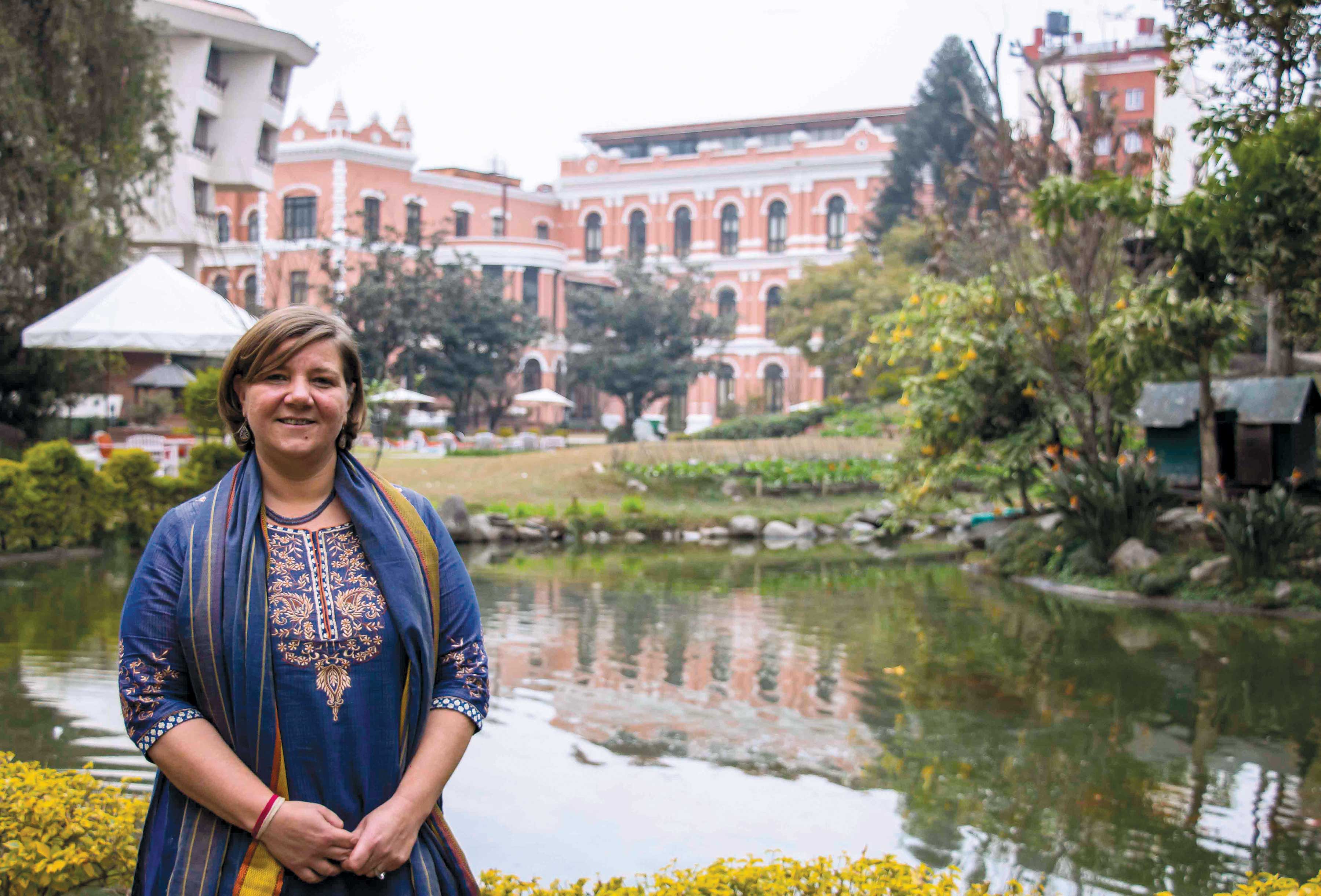For those who love to get out of the city and head up the hills, the outskirts of Kathmandu Valley present endless possibilities for hikers, and all one needs to do is search for new routes. This is quite easily done, as while on a hike, you can always discover other routes and places that would be interesting to explore. Like they say “One thing can lead to another; one hike leads to the next one.” There are also times when you have little idea where a trail leads to, but you go there anyway. And, some of them turn out to be absolutely marvelous hikes.
One such hike was a result of my habit of strolling off during picnics while the rest are busy playing games or gambling. While on an office picnic to Dakshinkali, which has officially designated picnic spots nearby, I had as usual picked up a trail that went past the shrine. More than ten years later, I decided to hike up this path again and arrived at the Dakshinkali shrine, 22 km from Kathmandu, at around nine in the morning. I stopped for tea and watched a goat refuse to walk to his execution; he had to be carried there. It was quite thought provoking! The main road that goes past the shrine (after the line of shops) has been recently widened and has become an important link to Hetauda, used by countless vehicles. Sadly, as each vehicle passes by, it leaves a cloud of dust that can transform you into a light brown sample of uno homo sapien. So, I decided I must leave this road as soon as possible, and I was in luck. Just five minutes into the hike, I discovered a short cut heading straight up the side of the main road (on the right). I also had the good fortune of meeting some villagers coming down, who informed me that the road led to a village, and that it went all the way to the top of the hill; just what I was looking for.
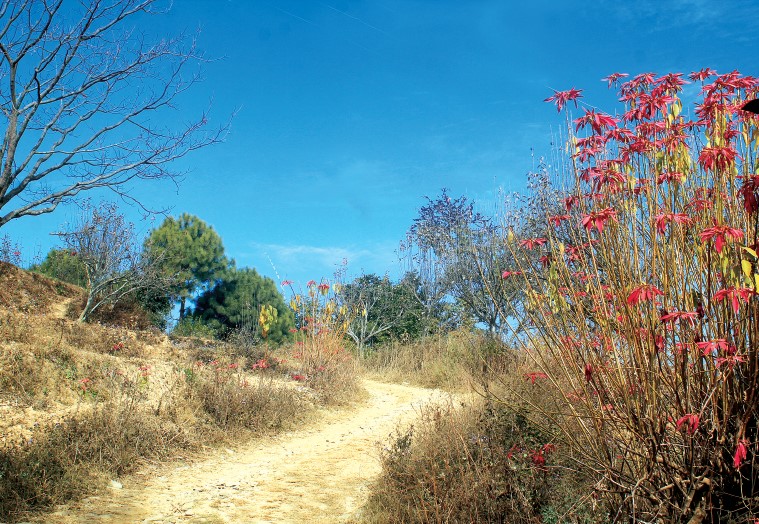
The early morning had begun with the sky completely overcast, but now it was clearing up; I got the feeling that this was going to turn out good! After hiking for fifty minutes along the ridge, I came upon a village called Thasigaon with several lapsi (local Hog plum) trees heavily laden with large bunches of fruit. In fact, the leaves had entirely disappeared, and there were only fruits hanging from the branches. Other flowering trees in full bloom made the village quite picturesque, with bright red flowers sparkling in the morning sunshine. To my delight, the trail seemed to go all along the ridge, revealing spectacular views on both sides. Half an hour later, I was in Danda Gaon (10:30 a.m.), an appropriate name, meaning ‘hilltop village’. On the way there, I met some Tamang kids who loved to be photographed, and two boys who wouldn’t stop wrestling. I walked further up and could see Kathmandu Valley on one side, which lay under a shroud of smog, while on the other side were green hills under a rich blue sky. The contrast was unbelievable and quite saddening to see our city engulfed in pollution.
Past the village, there was another hill to climb, and it looked like it would provide even better views of the surroundings. I reached the top at 11:15, but discovered another hill waiting to be climbed. So, off I went again, determined to reach the highest spot, and finally at 12:15, I came upon stone steps that indicated there was something important at the very top. As you often discover on hilltops, I found a shrine with stone idols lined up and signs of sacrifice, as the area was littered with chicken feathers. I was later to learn that this was Chaukoti Devi. The top is flat and round in shape, and the view is simply astounding. On one side is the view of the road to Hetauda amid rice terraces and the Kathmandu valley, on the other, Himalayan peaks distinctly visible in the distance. Walk around, and you enjoy a 360 degree view of the surrounding areas. I could make out a number of places in the distance that I had hiked to before, such as Tika Bhairav, faintly discernible, and Dukuchap nearby. As I got off the top, I came upon a good spot for lunch, from where I could watch the vehicles on the road to Hetauda. It was 12:30 p.m. now.
Down the lunch spot, a narrow trail along the ridge led to yet another hilltop, and it seemed to be higher than Chaukoti Devi. So, after lunch I walked down to reach the trail leading up to this other hill. I can never resist a climb to the top, as the prospects of a great view are always enticing. As I began climbing up again, I realized I was walking through burial grounds, as there were tombs made of stone scattered about. Still on the ridge, the trail going through a light pine forest is superb. Although a fabulous hiking trail, it was practically deserted, and there was not a soul in sight. On other trails, one comes across many students, and bikers, too, especially on Saturdays. As I went further up, enjoying amazing panoramic views of the valley, I came upon an open meadow with dried up grass. A lovely spot that I am sure is a rich green in summer, especially during the monsoon. There is a motor road here, but I chose to walk along a small track that had better views.
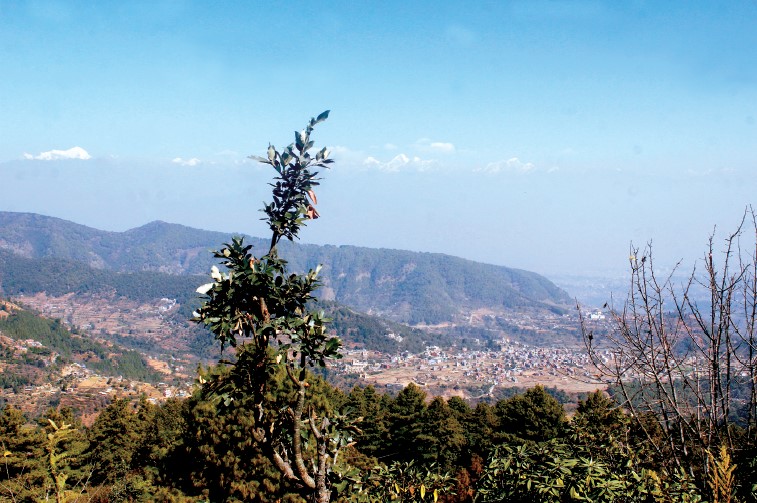
When I finally made it to the top at 1:45 p.m., I was surprised to see a football field there, although the center was much higher than the two ends, which must make the game most interesting. No matter which way you are kicking, you are going downhill heading for the goalposts, trying to catch up with the ball. Reaching the very top, I took pictures of the great views. There are so many fascinating views along this trail that I was getting a little tired of it, and reaching a point where I was about to say, “Okay, enough!” But, this view point is exceptional, as I had come a considerable distance beyond Dakshinkali, and looking down at an extended valley stretching for miles beyond Chobar. I am sure very few people have enjoyed this sweeping view of the valley, and beyond.
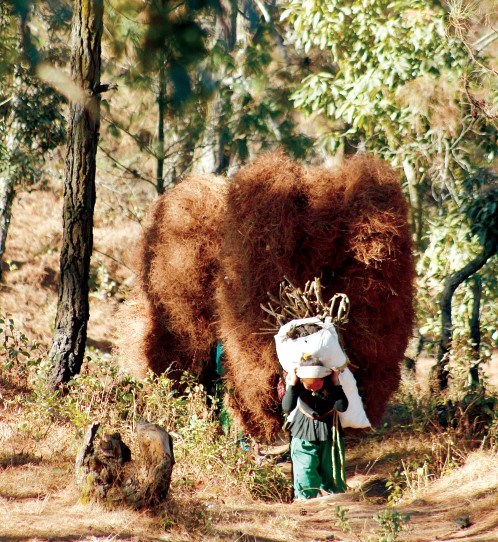 Around 2 p.m., I headed back, and this time around I came across many villagers returning home. At first glance, I thought I was looking at a giant animal toiling up towards me. It turned out to be women carrying massive piles of pine needles on their backs. When asked what they were for, they said, “It’s something we put on the floor so the animals will not suffer from the cold.” I’ve often sat on pine needles lying on the forest floor, and they do serve as a very soft carpet. Good for the animals and good of these caring womenfolk!
Around 2 p.m., I headed back, and this time around I came across many villagers returning home. At first glance, I thought I was looking at a giant animal toiling up towards me. It turned out to be women carrying massive piles of pine needles on their backs. When asked what they were for, they said, “It’s something we put on the floor so the animals will not suffer from the cold.” I’ve often sat on pine needles lying on the forest floor, and they do serve as a very soft carpet. Good for the animals and good of these caring womenfolk!
I looked for another route to come back down, and found myself where I didn’t want to be. It wasn’t fun walking along the motor road past Ram Bhanjyang, swallowing tons of dust. I would much prefer to walk back the same route and come directly down to Dakshinkali. After a wonderful ridge walk, I was back at the shrine by 4 p.m.; another rewarding hike under my belt, with tons of photographs to remind me of the unforgettable excursion.


